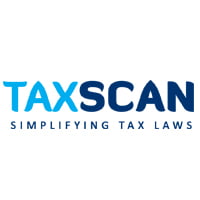SARFAESI Act Allows Joint Application by Tenants with Separate Lease Agreements: Kerala High Court [Read Order]
It was observed that procedural rules under the SARFAESI Act are to be interpreted in a manner that furthers the objective of effective and timely justice, rather than creating hurdles for genuinely aggrieved parties
![SARFAESI Act Allows Joint Application by Tenants with Separate Lease Agreements: Kerala High Court [Read Order] SARFAESI Act Allows Joint Application by Tenants with Separate Lease Agreements: Kerala High Court [Read Order]](https://images.taxscan.in/h-upload/2025/06/24/2053620-joint-application-tenants-lease-agreements-taxscan.webp)
The Kerala High Court has clarified that the SARFAESI Act, 2002, does not prohibit multiple tenants from filing a consolidated application before the Debts Recovery Tribunal (DRT), even if separate lease deeds bind them. The petitioners, Moideen Koya, Mohammed T., Muhammed Sinan, and Dinoop D.D., were tenants of a secured asset located in Thamarassery, Kozhikode.
When a possession notice was issued by an Advocate Commissioner on 5 June 2024, acting on behalf of Pegasus Assets Reconstruction Company Pvt. Ltd., the tenants approached the DRT with a consolidated application under Section 17 of the SARFAESI Act. Their plea was a challenge against the creditor’s enforcement measures, which threatened to uproot their businesses.
The DRT Registry rejected the application on a procedural ground, that four different tenants could not file a single application, even if their grievance arose from the same enforcement action. The petitioners moved the High Court challenging this rejection.
The High Court, allowing the original petition, took strong exception to the DRT’s approach, observing that neither the SARFAESI Act nor the Security Interest (Enforcement) Rules, 2002, contained any express bar on filing a consolidated application. On the other hand, Section 17(1) of the Act uses the words “any person (including borrower)”, a phrase the Court interpreted as broad and inclusive enough to cover tenants whose lawful possession is disturbed by a secured creditor.
The single bench consisting Justice Mohammed Nias C.P observed that SARFAESI was designed to provide a streamlined and efficient recovery mechanism, not to become a procedural roadblock for those adversely affected by its operation. It was held that when the challenge stems from a common cause of action, insisting on separate applications only adds to litigation and delays resolution, adding that such an interpretation would be wholly inconsistent with the legislative intent.
This judgment drew support from the Supreme Court’s ruling in Mardia Chemicals Ltd. v. Union of India,which asserted that proceedings under Section 17 are like original proceedings and not appellate ones, and that justice should not be defeated by technicalities. The Court also reminded the DRT of its duty as a specialized forum to adopt a pragmatic approach that upholds access to justice. It was upheld that procedural law should be a handmaiden to justice, not its master, and the High Court directed the Tribunal to register the consolidated application and proceed to hear the matter on its merits.
As a result, the impugned order was set aside, and the Registrar of the DRT was directed to number the application forthwith. The Tribunal was further instructed to consider the petitioners’ case on its merits and pass orders by the law. The interim relief granted by the High Court was extended for another six weeks to ensure that the petitioners could pursue appropriate remedies before the Tribunal without facing immediate dispossession.
Support our journalism by subscribing to Taxscan premium. Follow us on Telegram for quick updates


